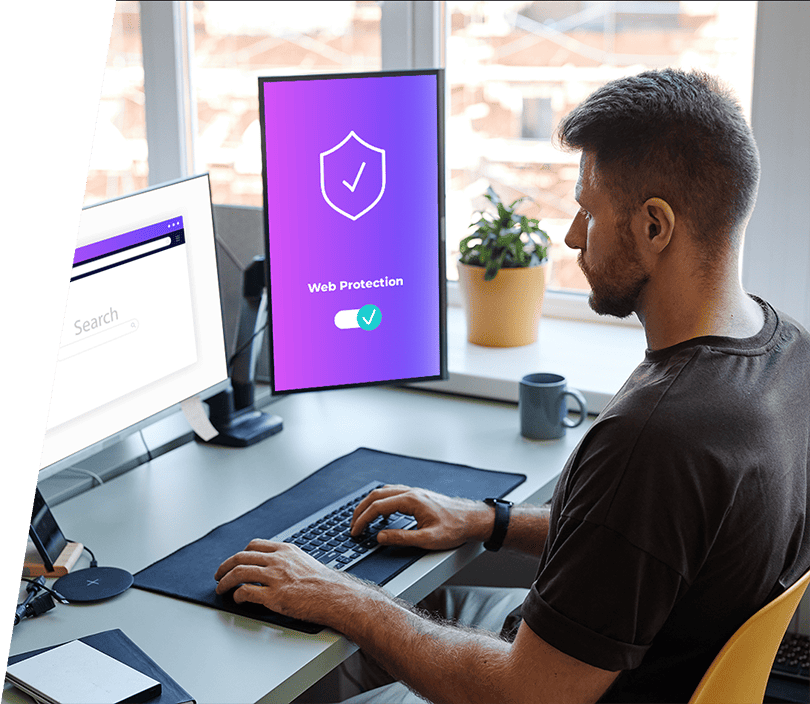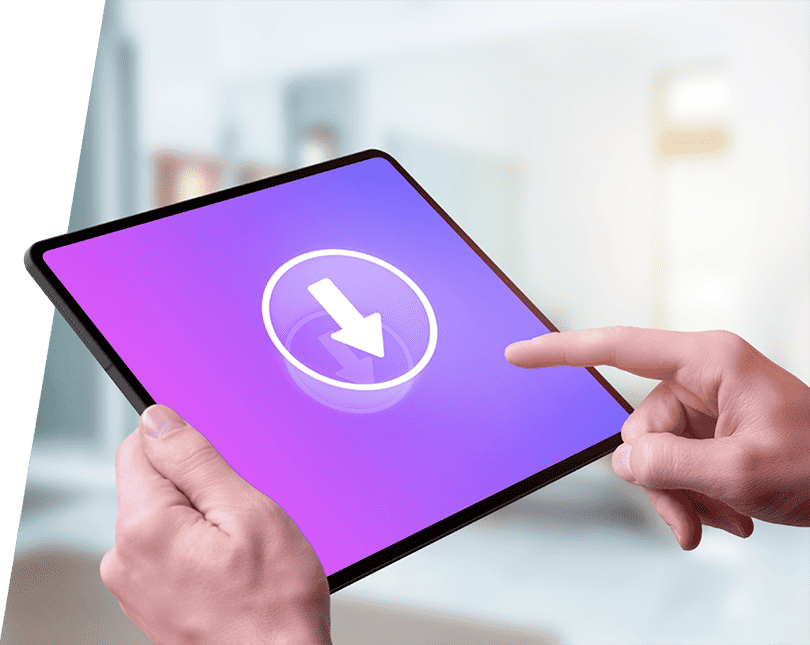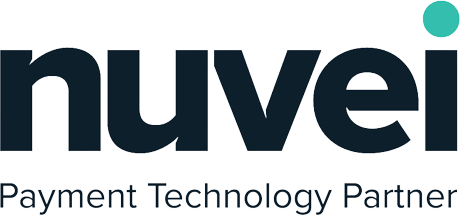Customer Identity & Access Management (CIAM)
Centralized internet-scale security solutions enabling a safe, frictionless customer experience and minimum time-to-market to precede competition.

Go Beyond Legacy Solutions
We at GlobalDots hunt for the most cutting edge and relevant technologies out there.
Once tested and found qualified we bring you the most certified innovative products out there for every pressing use case.

Your Benefits
Give end-users a seamless, secure app experience across devices using CIAM capabilities like SSO, MFA and social login, while you build personalized experiences according to each end-user’s data to get the most out of each visit.

 Centralized Management
Centralized Management
Collecting omnichannel user information into a centralized management system eases the managing of access and credentials of end-users across devices, websites and mobile apps while staying compliant according to security standards.

Allow developers to focus on creating business value by releasing more functionality and capabilities to production faster, by offloading CIAM in the trusted hands of an up-to-date solution.

 Developer-Friendly Security
Developer-Friendly Security
Developers can flexibly apply smart identity protection when building an app, integrating multiple apps, looking to add account takeover protection, and building new platforms.

Bye Login, Hi Unlock: Biometric FIDO2
Biometric authentication leverages Web Authentication APIs (WebAuthN) according to the FIDO2 protocol. This allows the complete elimination of usernames, passwords, and the costly operation behind them. Check out the whitepaper for detailed charts and scenarios along the user journey.

It’s time to get rid of passwords!
-
Can I switch between vendors if I’m not satisfied with one of them?
Yes, one of the main advantages of working with GlobalDots is that we have relationships with multiple vendors per solution category, so our customers can switch between vendors if they would like to. Moreover, we will proactively offer better vendors if we see the value for the customers in terms of features, capabilities or price.
-
How does GlobalDots keep up with the latest technologies in the market?
The people working at GlobalDots live and breath technology. We have relationships with all the cool startups and always seeking new vendors with innovative tech to offer to our customer base. We research and explore emerging technologies on a weekly and daily basis, we filter out the noise and focus only on the promising solutions we vetted that will bring the most value to our customers.
-
What does support look like when working with GlobalDots?
Our solutions architects, engineers and DevOps experts have hands-on experience with the solutions we resell and integrate. Our engineers work with you to resolve any issue to your satisfaction, and never leave you hanging. If needed, we’ll be the ones to engage directly with the vendor, so you don’t have to.
-
What is the difference between IAM and CIAM?
The difference between Identity and Access Management (IAM) and Customer Identity and Access Management (CIAM) lies primarily in who the identities belong to and the goals of managing those identities. While they share some underlying principles, they are optimized for different types of users, security concerns, and functionality. IAM is primarily designed for managing internal users—employees, contractors, and administrators—within an organization. The focus is on controlling access to internal systems, resources, and data. Instead, a CIAM is focused on external users-customers, partners, or third-party users-who access the organization’s products, services, and applications. CIAM must accommodate a larger, more dynamic, and geographically diverse customer base.
-
Is IAM the same as Active Directory?
IAM is a broad term that covers managing identities and access across a wide range of platforms and environments, while Active Directory is one specific directory service developed by Microsoft for Windows-centric networks. Active Directory can be part of an IAM strategy, especially in organizations using Windows infrastructure, but IAM encompasses far more than just AD. Indeed, IAM encompasses a wide range of tools, practices, and policies used to manage digital identities across various platforms and environments (cloud, on-premises, hybrid). It covers user authentication, single sign-on (SSO), multi-factor authentication (MFA), role-based access control (RBAC), and managing access to both internal and external systems (e.g., SaaS applications). An IAM solution can be implemented across multiple vendors and technologies, not just Microsoft. AD is a specific directory service (tightly coupled with Windows-based environments) that stores information about objects (users, devices, services, etc.) within a network and is used for centralized authentication and authorization. It enables key features like Group Policy Management, Kerberos-based authentication, Domain Controllers, and centralized control of user permissions. AD is mainly used for on-premises environments, though it can integrate with cloud services via Azure AD.
-
What is SSO?
Instead of requiring users to authenticate separately for each service or system, SSO enables one-time authentication to access multiple systems, making the user experience more seamless and secure. With SSO, the authentication process is centralized. Once a user is authenticated by the SSO service (Identity Provider), their credentials are trusted across multiple applications or services (Service Providers). This allows users to move between applications without having to log in again and this improves the user experience by reducing the number of times they need to log in. A user enters their credentials only once, and the SSO mechanism takes care of the rest, providing access to all connected services. In SSO, the concept of federated identity is often used, where multiple systems agree to trust the same identity provider (IDP). Common protocols like SAML (Security Assertion Markup Language), OAuth, and OpenID Connect are used to enable this trust.
-
What is the main purpose of CIAM?
A Customer Identity and Access Management (CIAM) system is the intersection of cybersecurity and digital customer interaction. Its purpose is to securely manage and streamline the authentication, authorization, and user experience for customers interacting with an organization’s digital services. The principal features are:
- User Identity Management: It handles customer registration, login, and profile management. This includes supporting multiple identity providers (e.g., social logins, email/password, multi-factor authentication) and centralizing these identities for better control.
- Access Control: It enforces proper authorization mechanisms, ensuring that users have the right level of access based on their identity. Fine-grained access control mechanisms are key in this space, especially for protecting sensitive customer data.
- Security: It is designed to protect customer data from threats like account takeovers, fraud, and privacy violations. This includes implementing measures like adaptive authentication, anomalous behavior detection, bot management, and data encryption to mitigate risks.
- User Experience: A critical aspect is providing a seamless user experience while maintaining robust security. This includes features like single sign-on (SSO), progressive profiling (collecting user data over time), and self-service capabilities (password resets, profile updates) that don’t compromise security.
- Compliance: It ensures compliance with privacy regulations like GDPR, CCPA, or any other regional mandates, especially when handling customer data. It provides mechanisms for users to control their data (e.g., data deletion requests) while maintaining audit trails for compliance purposes.
The main focus is on balancing security and user convenience.
-
Why do you need CIAM?
You need CIAM because it’s essential for managing customer interactions with digital services in a way that is both secure and user-friendly, while supporting the unique challenges that come with scaling and securing customer identities. Indeed, it securely scales your customer identity management, protects user data from modern threats, complies with privacy regulations, improves the customer experience, and reduces operational complexity. CIAM is not just about securing identities; it’s a competitive advantage that enhances both security and customer satisfaction in an interconnected digital world. Here’s why a CIAM is crucial:
- Security: At its core, CIAM helps protect customer data and prevent unauthorized access to sensitive information. This is critical in an era where cyberattacks, like account takeovers and phishing, are becoming more sophisticated and regulatory mandates require strong privacy controls. CIAM implements advanced security features like:
- Multi-Factor Authentication (MFA) and adaptive authentication.
- Anomalous behavior detection to recognize and block suspicious activity.
- Federated identity management, allowing users to log in with trusted external credentials (e.g., social logins), while maintaining control over access.
- Scalability: Unlike traditional IAM systems, CIAM is designed to handle millions of customer identities across different geographies, platforms, and devices. As businesses grow and expand, CIAM solutions provide:
- Elastic scaling to support surges in traffic (e.g., during product launches or peak times).
- A globally distributed architecture that reduces latency for customers in different regions.
- Integration with external identity providers and SaaS solutions.
- Customer Experience: In a competitive digital landscape, customer experience is everything. CIAM systems enhance the customer journey by:
- Simplifying login processes (e.g., with SSO or passwordless authentication).
- Reducing friction with self-service capabilities, like password resets and profile management.
- Supporting omnichannel access, so customers can seamlessly interact across web, mobile, and IoT platforms with the same identity. These optimizations reduce abandonment rates, improve customer satisfaction, and build loyalty.
- Compliance and Privacy: Data privacy regulations (GDPR, CCPA, etc.) impose stringent requirements on how companies handle customer data. CIAM provides:
- Data governance tools to track where customer data resides, how it’s used, and to enforce consent management.
- Privacy by design, ensuring that sensitive data is encrypted and access is tightly controlled.
- Audit trails and mechanisms for customers to exercise their rights (e.g., data deletion or modification requests)
- Personalization: A CIAM system allows businesses to personalize customer interactions based on a 360-degree view of their identity:
- Progressive profiling enables you to collect and enrich customer data over time in a non-intrusive way.
- By integrating CIAM with marketing systems, you can use customer insights to deliver tailored experiences (e.g., personalized recommendations or targeted promotions).
- Integration with Broader Ecosystems: CIAM platforms easily integrate with third-party services, customer data platforms, CRM systems, and marketing automation tools to offer businesses flexibility in managing customer engagement.
- Cost Efficiency: A centralized CIAM system reduces operational overhead by:
- Consolidating identity management and authentication systems.
- Minimizing support costs (e.g., through self-service options).
- Enhancing security through centralized policies and access controls, reducing the cost of breaches or compliance fines.
- Security: At its core, CIAM helps protect customer data and prevent unauthorized access to sensitive information. This is critical in an era where cyberattacks, like account takeovers and phishing, are becoming more sophisticated and regulatory mandates require strong privacy controls. CIAM implements advanced security features like:
-
What is CIEM?
In large cloud environments, managing entitlements manually is impractical due to the sheer scale and complexity. Without proper visibility and control, organizations risk excessive permissions that increase the attack surface, misconfigured roles and policies that could expose sensitive data or services to unauthorized access and difficulty meeting compliance and security requirements across diverse cloud infrastructures. A CIEM (Cloud Infrastructure Entitlement Management) is a specialized approach to addresses these issues by:
- Reducing risk by enforcing the principle of least privilege.
- Providing insight into complex entitlements, roles, and policies.
- Automating the right-sizing of permissions to ensure that only necessary privileges are granted.
Its main focus is on providing visibility, control, and governance over cloud entitlements-essentially, the permissions granted to identities (both human and machine) within a cloud infrastructure.
-
Why managing non-human identity is crucial for cloud security?
Managing non-human identities is crucial for cloud security because of the proliferation of automated processes, services, and APIs that rely on machine accounts. Properly governing these identities reduces the risk of over-privileged access, prevents credential leaks, and ensures the cloud infrastructure remains secure and compliant. As cloud environments scale and become more dynamic, the effective management of these non-human identities is as important, if not more so, than managing human identities. Non-human identities frequently rely on API keys, tokens, or certificates for authentication. If these credentials are mismanaged (e.g., hard-coded into applications or stored insecurely), they can easily be exposed, leading to unauthorized access. Managing non-human identities ensures compliance by providing auditable logs, access control policies, and least-privilege enforcement for these identities. This helps organizations demonstrate that all cloud identities (human and non-human) are governed properly.















